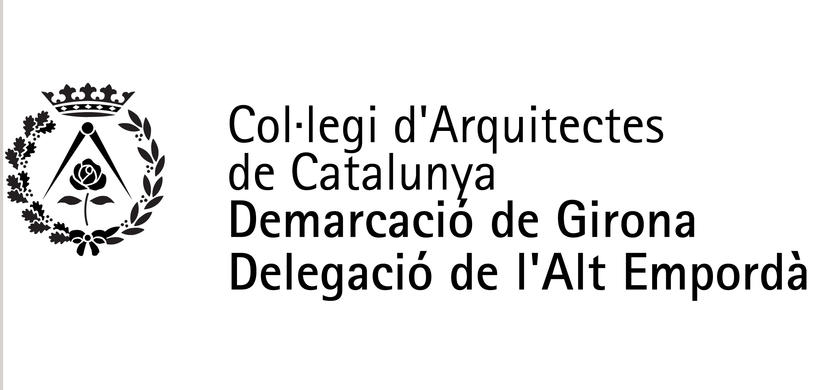Propers Actes
7 Temples. Les formes del culte en l'arquitectura de...
7 Temples. Les formes del culte...
Presentació del 'Nou reglament de seguretat contra...
Presentació del 'Nou...
Mentoring Day: una jornada per connectar i créixer
Mentoring Day: una jornada per...
Ruta arquitectònica per Finlàndia. Materialitat, natura i...
Ruta arquitectònica per...
SínTesis Arquitectòniques. Esdeveniment i ciutat. Quan...
SínTesis Arquitectòniques....
Exposición "Coderch a Roses. Casa Rozes, 1962"
La muestra invita a descubrir, a través de la mirada personal del fotógrafo Francesc Català Roca, una de las casas más emblemáticas de la arquitectura moderna catalana de los años sesenta en la Costa Brava, que ha acontecido icono internacional. A la vez, la exposición se complementa con una Mesa Redonda para reflexionar alrededor del mantenimiento, el uso y la protección del patrimonio arquitectónico del Movimiento Moderno.
Comisariado:
Dana Palmada, arquitecta
Organiza:

Con la colaboración de:


Exposició "Coderch a Roses. Casa Rozes, 1962"
La mostra convida a descobrir, a través de la mirada personal del fotògraf Francesc Català Roca, una de les cases més emblemàtiques de l’arquitectura moderna catalana dels anys seixanta a la Costa Brava, que ha esdevingut icona internacional. Alhora, l’exposició complementa la taula rodona La Casa Rozes a debat, on es reflexionarà al voltant del manteniment, l’ús i la protecció del patrimoni arquitectònic del Moviment Modern.
Comissariat:
Dana Palmada, arquitecta
Organitza:

Amb la col·laboració de:


Exhibition: 'COAC Collections / Clotet_Tusquets 1960-1980'
The exhibition was designed and curated by the architects themselves and consists of a chronological, cross-cutting journey through their entire work: from their early projects, such as the Sonor store and the housing for the Glaziers’ Association of Hospitalet, through to the urban planning of the Liceu al Seminari and the refurbishment of the Palau de la Música, on which architect Ignacio Paricio also collaborated. The exhibition goes beyond the field of urban planning and building to embrace furniture design and audiovisual pieces.
One of the films being screened is 'Miró, Otro', which Pere Portabella produced on a temporary intervention by the Studio PER architects—including Lluís Clotet and Òscar Tusquets—in conjunction with Catalan painter Joan Miró in 1969. This intervention will be recreated between February and April in the windows of the COAC’s facade.
Tusquets and Clotet began their professional practice together in 1964 when they founded Studio PER, a studio shared with the architects Pep Bonet and Cristian Cirici. Their professional association lasted through to 1984, when the studio was divided.
The exhibition material comes from donations of graphic material from the studio to the COAC’s Historical Archive by the two architects and Ignacio Paricio. The exhibition forms part of the Fundamentals space of the COAC’s cultural programme, within the 'Collections' section, which displays material held by the Historical Archive to showcase the Association’s rich documentary heritage.
Billennium, an installation by artist Anna Moreno
Billennium is the result of an investigation into the communal and modular architecture that emerged from the studio of Spanish architect Ricardo Bofill in the 1970s, combined with the literature of sci-fi writer J.G. Ballard. In 1962, Ballard wrote Billennium, a story that describes the claustrophobia and paralysis of an overcrowded world. Billennium departs from the symbol of the bee as a floating signifier and relocates in the discontinuous line between utopia and dystopia in architecture, a balancing exercise that is repeated in the entire installation at a structural level. Adding to Ballard's scenario, Moreno speculates on a post-apocalyptic future in which honey, rather than gold or petrol, would act as the main value marker.
Anna Moreno (Barcelona, 1984) lives and works in Barcelona and The Hague (Netherlands). Her art practice develops through expanded events and solo exhibitions such as D'ahir d'abans d'ahir de l'altre abans d'ahir i més d'abans encara, Fundació Blueproject, Barcelona, 2016; The Whole World Was Singing, HIAP Project Space, Helsinki, 2016 and An Awkward Game, 1646, The Hague, 2015. She has shown her work in the group shows En los cantos nos diluímos, Sala de Arte Joven, Madrid, 2017; Distopía General, Reales Atarazanas, Valencia, 2017: CAPITALOCEAN, W139, Amsterdam, 2016; Lo que ha de venir ya ha llegado, CAAC in Sevilla, MUSAC, at León and Koldo Mitxelena in Donostia, 2015, and Generaciones, La Casa Encendida, Madrid, 2014, among others. Anna Moreno's work has been featured at symposia such as Visual Activism, SFMOMA, San Francisco, 2014, and United We Organize, Stroom Den Haag, The Hague, 2013. The artist has participated in residencies at Artistas en residencia, CA2M and La Casa Encendida, Móstoles and Madrid, 2017; Seoul Art Space Geumcheon, Seoul, 2012, and Atelierhaus Salzamt, Linz, 2011.
Anna Moreno teaches Artistic Research at the Royal Academy of Art in The Hague, where she is a founding member of HELICOPTER, an artist-run initiative for experimentation and knowledge exchange.



